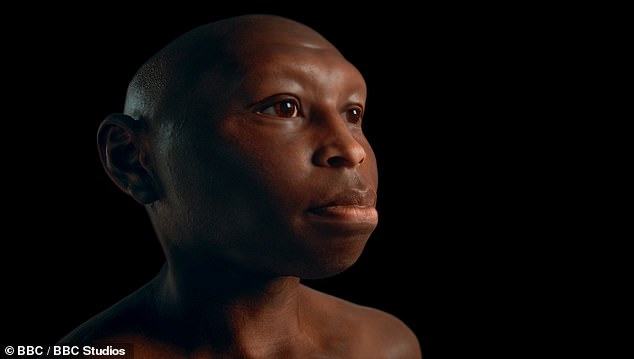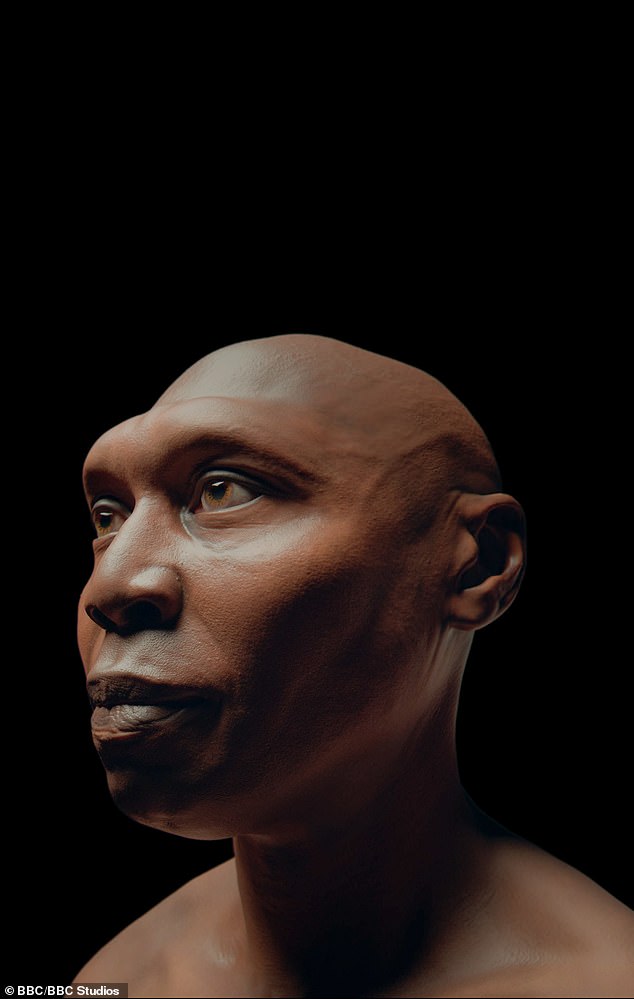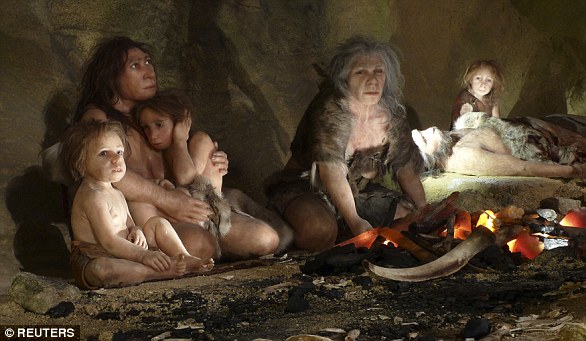Homo sapiens might have been the dominant species on the planet for millennia, but it wasn’t always that way.
When the first Homo sapiens emerged around 300,000 years ago, our ancestors were just one of six human species on the planet.
Now, scientists have revealed the most scientifically accurate reconstructions of what those ancient humans would have looked like.
This includes the face of an elusive ancient species known as ‘The Hobbit’.
As part of the upcoming BBC documentary, ‘Human’, scientists have combined cutting-edge digital modelling techniques with the latest fossil evidence.
The result is our best look at Homo erectus, Homo floresiensis, Neanderthals, and the very earliest members of Homo sapiens ever discovered.
Paleoanthropologist and presenter of the show Ella Al-Shamahi says: ‘These are the most scientifically accurate collection of hyper-real 3D models of human species ever put on TV that we know of.
Human begins on Monday 14 July, 9 pm, on BBC Two and all five episodes will be available on BBC iPlayer from this date.

Scientists have created the most scientifically accurate reconstructions of ancient human species, including the tiny species nicknamed ‘The Hobbit’ (pictured)
Homo erectus
Home erectus was the first human species to exclusively walk upright on two legs like humans do today.
Anthropologists believe they lived between 1.89 million and 110,000 years ago.
They lived in an area which initially covered Africa but later spread across large parts of Asia and even to the edges of Europe.
This was the first time a hominin, a primate closely related to humans, had ventured outside of Africa.
It would be a further two million years before Homo sapiens would be able to replicate this daring migration.
They were taller than previous hominins, with long legs that made them efficient walkers.
Their upright posture also freed up the use of their hands, which allowed big-brained Homo erectus to develop tools and become the first hominin to master fire.

Home erectus (pictured) was the first human species to exclusively walk upright on two legs like humans do today. Anthropologists believe they lived between 1.89 million and 110,000 years ago
Physically, they were somewhat similar to modern-day humans but a little shorter, around five feet tall on average.
They had similar head sizes compared to a modern human, but had flatter faces and a more prominent brow ridge.
Homo floresiensis
This species was found on the island of Flores, Indonesia and lived between 700,000 and 50,000 years ago.
Nicknamed ‘The Hobbit’ after J.R.R Tolkien’s fictional creatures, Homo floresiensis was exceptionally small compared to modern humans.
The average homo floresiensis stands at just three and a half feet tall (one metre), with very long legs compared to their body size.
Much like Tolkien’s Hobbits, Homo floresiensis also had large, flat feet.
They also had very small skulls, with brains about one-third the size of modern humans – similar to that of a chimpanzee.

Homo floresiensis (pictured) was a tiny, island-dwelling human species which stood at no more than three and a half feet tall and lived between 700,000 and 50,000 years ago
In addition to their smaller heads, Homo floresiensis likely had a more pronounced brow and no prominent chin.
Scientists believe that Homo floresiensis became so small due to an effect called insular dwarfism.
This reflects the fact that large animals on islands evolve to become smaller to deal with limited resources.
At the same time, smaller animals typically become larger due to a lack of predators.
This meant Homo floresiensis shared its island with elephants that were the size of cows, giant brown rats and meat-eating storks which stood up to two metres tall.
Homo neanderthalensis
More commonly known as the Neanderthal, Homo neanderthalensis are our closest human relatives.
This species lived across a huge swathe of the Middle East, Central Asia, and Europe between 430,000 and 40,000 years ago.

Homo neanderthalensis, also known as the Neanderthal, is our closest human relative. These species lived between 430,000 and 40,000 years ago and often interbred with humans
Neanderthals were physiologically adapted to colder weather, with wide noses and nostrils adapted for breathing cold, dry air.
They had large front teeth, which they used as a ‘third hand’ while preparing food, but did not have a pronounced chin like a modern human.
Their bodies were stocky and well-muscled, with longer arms and shorter legs than modern humans.
Adults stood about five feet (1.5 metres) tall but could weigh between 64 and 82kg.
Scientists think their proportions would have minimised their surface area to help preserve body heat during Earth’s colder periods.
Neanderthals also overlapped with Homo sapiens for thousands of years and the two species often mingled and interbred.
Every current human outside of Africa has some Neanderthal DNA, with some people getting up to four per cent of their genes from this ancient species.
Homo sapiens

The first Homo sapiens (pictured) were found in Jebel Irhoud in Morocco, North Africa, and scientists think they date back to around 300,000 years ago. These ancient Homo sapiens had slightly more pronounced brows and elongated heads
This reconstruction shows the oldest known Homo sapiens, the species of all modern humans.
These fossils come from a place called Jebel Irhoud in Morocco, North Africa, and scientists think they date back to around 300,000 years ago.
This puts the emergences of Homo sapiens some 100,000 years earlier than scientists had previously thought.
Although they were part of the same species, these very early Homo sapiens had a few minor differences to modern humans.
Most obviously, these individuals had heavier brows and elongated skulls.
Some scientists see this as evidence of earlier humans evolving into the very first Homo sapiens.
After emerging in Africa, a small group of around 10,000 Homo sapiens crossed into Europe around 60,000 years ago and managed to establish a population.
Everyone outside of Africa is descended from those first few thousand humans, which is why Africa has a much higher level of genetic diversity.

